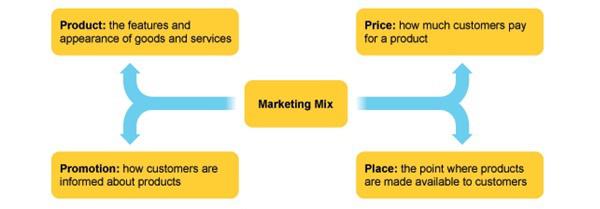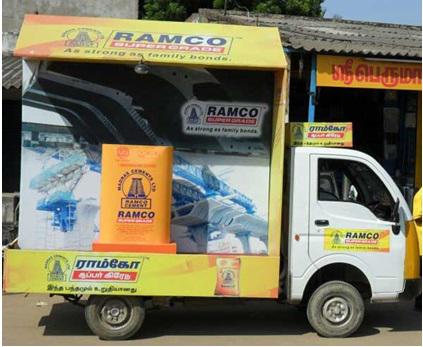Rural Marketing - Mix
Marketing mix comprises of various controllable elements like product, price, promotion and place. Success of any business enterprise depends on marketing mix and these four elements are like powerful weapons in the hand marketers.

Since behavioral factors of rural consumers are different and almost unpredictable in nature, the marketers have a challenging task to design marketing mix strategies for the rural sectors. Due to considerable level of heterogeneity, marketers need to design specific programs to cater needs and wants of specific groups.
Product Mix
Product is a powerful tool of an organization’s success. The products must be acceptable to rural consumers in all significant aspects. The firm must produce products according to the needs and future demands of rural buyers. The product features like size, shape, color, weight, qualities, brand name, packaging, labeling, services, and other relevant aspect must be fit with needs, demands and capacity of buyers.

Product must undergo necessary changes and improvements to sustain its suitability over time. The effectiveness of other decisions like pricing, promotion and place also depends on the product.
Price Mix
Price is the central element of marketing mix, particularly, for rural markets. Rural consumers are most price sensitive and price plays more decisive role in buying decisions.
Pricing policies and its strategies must be formulated with care and caution. Price level, discounts and rebates, then credit and installment faculties are important considerations while setting prices for rural specific products.
Normally, the low-priced products always attract the rural buyers, but rarely some rural customers are quality and status conscious.
Promotion Mix
Rural markets are delicately powerful to cater to the rural masses. The promotion strategies and distribution strategies and Ad makers have learned to leverage the benefits of improved infrastructure and media reach.
Most of the companies advertise their products and services on television and they are sure it reaches the target audience, because a large section of the rural India is now glued to TV sets. Marketers have to decide on promotional tools such as advertisement, sales promotion, personal selling and publicity and public relations.
The method of promotion needs to meet the expectations of the market. Vehicle campaigns, edutainment films, generating word of mouth publicity through opinion leaders, colorful wall posters, etc. — all these techniques have proved effective in reaching out to the rural masses.
Village fairs and festivals are ideal venues for projecting these programs. In certain cases, public meetings with Sarpanch and Mukhiya too are used for rural promotion. Music cassettes are another effective medium for rural communication and a comparatively less expensive medium.

Different language groups can be a low budget technique and they can be played in cinema houses or in places where rural people assemble. It is also important that in all type of rural communication, the rural peoples must also be in the loop. The theme, the message, the copy, the language and the communication delivery must match the rural context.
Eventually, the rural communication needs creativity and innovation. In rural marketing, a greater time lag is involved between the introduction of a product and its economic size sale, because the rural buyer’s adoption process is more time consuming.
Nowadays, educated youth of rural area can also influence decision-making of the rural consumers. Rural consumers are also influenced by the western lifestyle they watch on television. The less exposure to outside world makes them innocent and the reach of mass media, especially, television has influenced the buying behavior greatly.
Place Mix
Rural market faces critical issues of distribution. A marketer has to strengthen the distribution strategies. Distributing small and medium sized packets through poor roads, over long distances, into the remote areas of rural market and getting the stockiest to do it accordingly.
Both physical distribution and distribution channel should be decided carefully to ensure easy accessibility of products for rural consumers. Choosing the right mode of transportation, locating warehouses at strategic points, maintaining adequate inventory, sufficient number of retail outlets at different regions, and deploying specially trained sales force are some of the critical decisions in rural distribution.
Normally, indirect channels are more suitable to serve scattered rural customers. Usually, wholesalers are located at urban and semi urban to serve rural retailers. Not only in backward states, but also in progressive states, local rural producers distribute directly to consumers.
For service marketing, employees of rural branches can do better jobs. Various sectors like banking, insurance, investment, satellite and cable connection, cell phone, auto sales and services etc. — the market for these sectors is booming in villages of some states in a rapid speed. Service industries are trying to penetrate into rural areas by deploying specially trained employees and local rural area agents.
Nowadays, online marketing is also making its place gradually in rural areas of the progressive states. Marketers must design and modify their distribution strategies time to time taking into consideration the nature and characteristics prevailing in rural areas, may be quite differently than that of urban markets.





